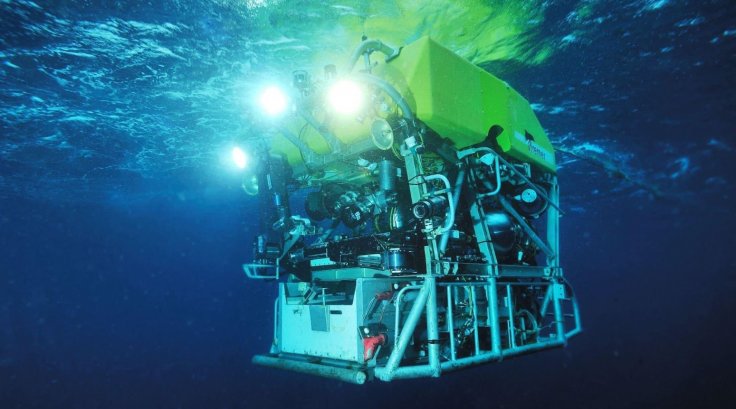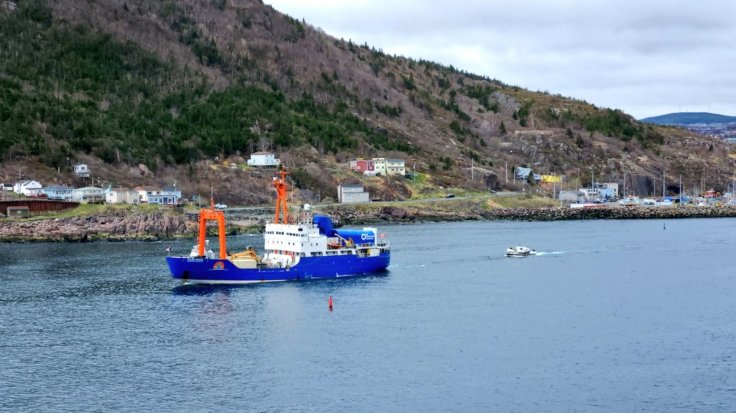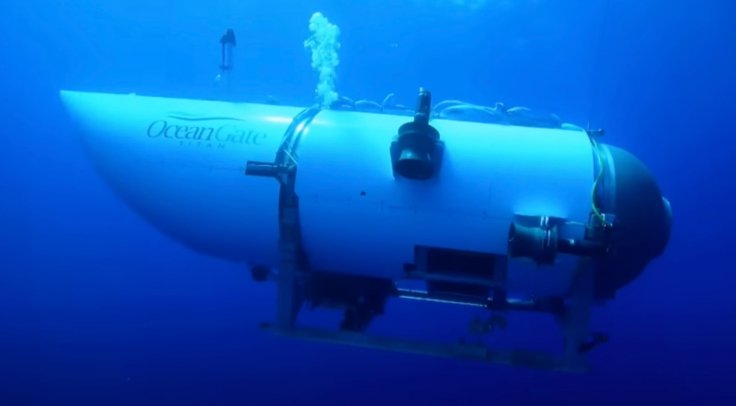It's now or a never mission for rescue teams searching for the missing Titan submersible. Search operators saw a ray of hope on Wednesday after they reported hearing underwater noises in the Atlantic. However, a day has passed since then but they are yet to locate the missing Titanic sub, with just a few hours left before the vessel's oxygen supply runs out.
In a last-ditch effort, rescue teams involved in the search will receive help from the Victor 6000 robot. This state-of-the-art deep-sea craft is among the limited number of vessels worldwide capable of reaching the wreckage, and it will be deployed to assist in the search efforts in the depths of the Atlantic Ocean.
Robot to Help Locate Sub

The Victor 6000, aboard the French research vessel L'Atalante, is being expedited to the search location. Victor 6000 reached the site on Wednesday evening EST, which leaves approximately 12 hours before the oxygen supply on the missing submersible is expected to run out Thursday.
The Victor 6000, a remote-controlled robot measuring 10 feet in length and featuring a distinctive bright yellow exterior, has been hailed as a "flagship device for underwater operations," according to the French network BMTV.
Given that the Titanic rests approximately 12,500 feet below the ocean surface, the Victor 6000 should be well-equipped to reach the wreckage.
To conduct the rescue operation, the Victor 6000 would be accompanied by the Horizon Arctic, a robust tug and supply ship.

The Horizon Arctic is equipped with a large cable that the deep-sea craft can use to descend toward the Titanic wreckage. This coordinated effort involving both vessels aim at facilitating the rescue mission effectively.
The Victor 6000 is linked to its main vessel through an extensive 8 km-long cable, which supplies it with electrical power. This arrangement allows the deep-sea craft to potentially undertake dives without any imposed time constraints.
Moreover, the Victor 6000 is equipped with manipulator arms that are capable of cutting cables or performing other necessary actions to assist in freeing a stranded vessel from entanglement or obstruction.
"Victor is not capable of lifting the submarine up on its own," Olivier Lefort from the French state-run oceanic research institute Ifremer told Reuters.

"Victor is able to do visual exploration with all the video equipment it has. It is also equipped with manipulating arms which could be used to extricate the sub, such as by sectioning cables or things that would be blocking it at the bottom," he said.
Race Against Time
However, given the time-sensitive nature of the situation, for a successful rescue to take place, the teams already present at the site would likely need to locate the missing submersible before the arrival of the Victor 6000. Time is of the essence, and locating the submersible promptly is crucial to maximizing the chances of a successful rescue operation.

Ifremer, the organization where one of the missing crew members, Paul-Henri Nargeolet, 77, had worked in the past, received a request for help from the US Navy, as mentioned by Lefort. Given the circumstances, Ifremer felt compelled to accept the request and offer their help in the search and rescue efforts.
"This is the logic of seafarers. Our attitude was: We are close, we have to go," he said.
Victor 6000 is operated by a 25-person crew onboard its mothership, the Atalante, all of whom are speeding to the search site with the hope of pulling off a miracle.

However, even if search vessels successfully locate the Titan, there are several obstacles to overcome in retrieving it. Although certain remotely operated vehicles (ROVs) possess manipulation capabilities, they lack the ability to raise it to the surface.
In order to address this challenge, the Flyaway Deep Ocean Salvage System (Fadoss) has been employed. Fadoss is a lifting system specifically designed to offer a dependable capability for lifting heavy loads of up to 27,200kg from the deep ocean.

Fadoss has the capability to retrieve substantial sunken objects that are both large and heavy, such as aircraft or small vessels. Its operational track record includes successful operations at depths close to 6,000 meters.
The Fadoss system primarily consists of a large winch equipped with a cable. One end of the cable is connected to a remotely operated vehicle (ROV), which in turn attaches it to the sunken vessel.

It is worth noting that the commercial vessel, Horizon Arctic, currently on its way to the search site, is believed to be equipped with a Fadoss system.
Additionally, the United States Navy has dispatched a Fadoss system to St. John's in Newfoundland for the mission.
However, before it can be deployed, the Fadoss system requires the process of welding it securely to the deck of a ship. This crucial step typically takes a complete day to complete, according to a navy official speaking to CNN. "We have a vessel of opportunity that we are looking to put under charter, but it is not currently under charter."









